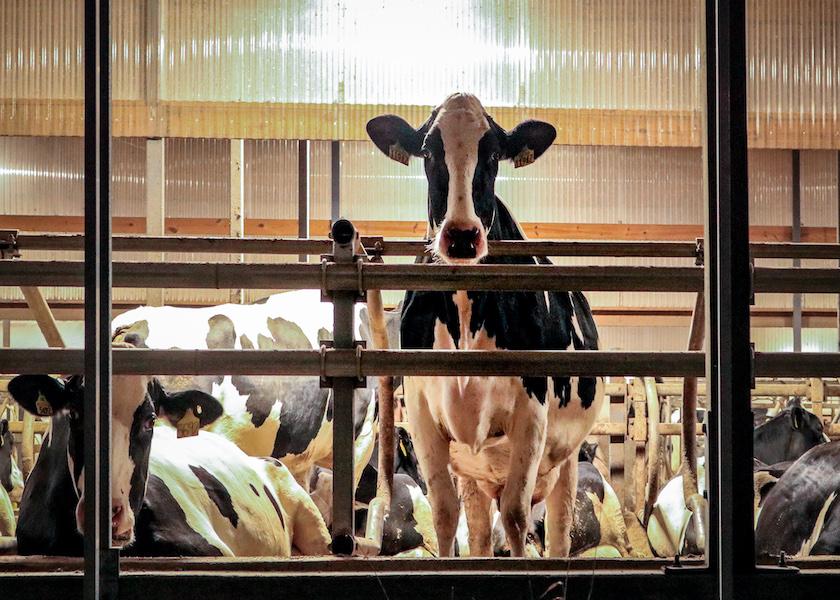Is it Time to Rethink Dairy Cow Lifespan?

A cow has a natural life expectancy of up to 20 years. Today, the average productive lifespan of a U.S. dairy cow is about 3 years.
“Productive” lifespan is defined as the length of time cows live after they have their first calf and start producing milk. Because most cows calve in for the first time at about 2 years of age, that means, on average, cows are living a total of about 5 years.
A few years ago, University of Florida Professor of Dairy Science Dr. Albert DeVries published an article in the Journal of Dairy Science examining the issue of productive lifespan. DeVries noted that dairy cow productive lifespan is a complicated and evolving issue, and one that can vary significantly based on conditions and priorities of individual herds.
Cows used to live longer in U.S. herds. In the 1930s, a productive life of 5 to 10 years after calving (7-12 years total) was common. That age has been going down since at least the 1960s, with assessments showing an average length in the herd after calving of 38 months around 2000, and 35.3 months – or fewer than 3 lactations – in 2018.
Have we hit the “nadir” of average productive lifespan for dairy cows? Possibly, considering a number of new factors DeVries discussed that are influencing mating, management, and culling decisions. They include:
- Reproductive efficiency changes – “Failure to conceive” has historically been a top criteria for culling lactating cows. After several decades of flat-to-declining reproductive efficiency, the last 2 decades have seen healthy improvements in breeding success. DeVries credited changes in management and genetic selection for improved fertility for the positive change. The upward trend could theoretically keep cows in milking herds longer.
- Sexed semen – Commercially available now for more than 20 years, female sexed semen has led to the ability to produce an abundance of heifer calves. For herds of a fixed size, that has meant more aggressive culling of older cows to make room for the more genetically advanced replacement heifers.
- Beef crossbreeding – Breeding to create higher-value surplus calves with beef semen – usually accompanied by genomic and/or dam-parity selection – has emerged in about the same timeframe as sexed semen. In some herds, this strategy may offset the production of excess heifers and thus reduce culling pressure.
- Genetic progress – DeVries cited predictions by Dr. Jack Britt, longtime dairy researcher and agricultural futurist. Britt speculated that the total genetic merit of dairy cattle, as a sum of all desirable traits, will continue to increase for at least the next 40 years, resulting in a doubling of milk production per cow. Britt predicted those cows also will have improved health and greater capacity for a longer productive life.
- Longer lactations – With fewer replacements potentially needed, does it really make sense to dry off cows milking 100+ pounds per day? Researchers are exploring the potential for using longer voluntary waiting periods before rebreeding to lengthen lactations. One advantage of this approach is reducing the frequency of risk surrounding the transition period.
- Social and environmental issues – Public concerns have been voiced about the perceived short lifespans of dairy cows, citing early culling as a symptom of poor animal welfare. High prevalence of lameness and failure to conceive have been noted as specific welfare issues. The environmental footprint of dairy products is also an issue of public concern. Researchers have found that increasing productive lifespan has been shown to reduce the environmental impact of dairy production, as herds with younger animals emit more greenhouse gases. DeVries said it is conceivable that the public will demand longer productive lifespans in the future.
A challenge in determining the ideal productive lifespan is that these and other factors – especially prices of milk, feed, and beef -- are relatively fluid and ever-changing. “Consequently, optimal replacement decisions and optimal annual cow replacement rates are dynamic and change over time,” said DeVries.
He pointed out that longer productive lifespans for healthy dairy cows are not necessarily profitable. Using a simple economic model, he arrived at an “ideal” productive lifespan of about 5 years.
The issue will be discussed in great depth at the 45th Discover Conference presented by the American Dairy Science Association (ADSA). “Dairy Cattle Lifespans: New Perspectives” will explore current data, future trends, and potentially out-of-the-box scenarios related to the way we approach productive lifespans in dairy cows – in both individual herds, and industry-wide.
For more on herd health, read:
- Managing Pain at All Life Stages is Key to Cow Welfare, Productivity
- New Genetic Defect Discovered in Holsteins
- Don’t Overdo Lock-up Times







